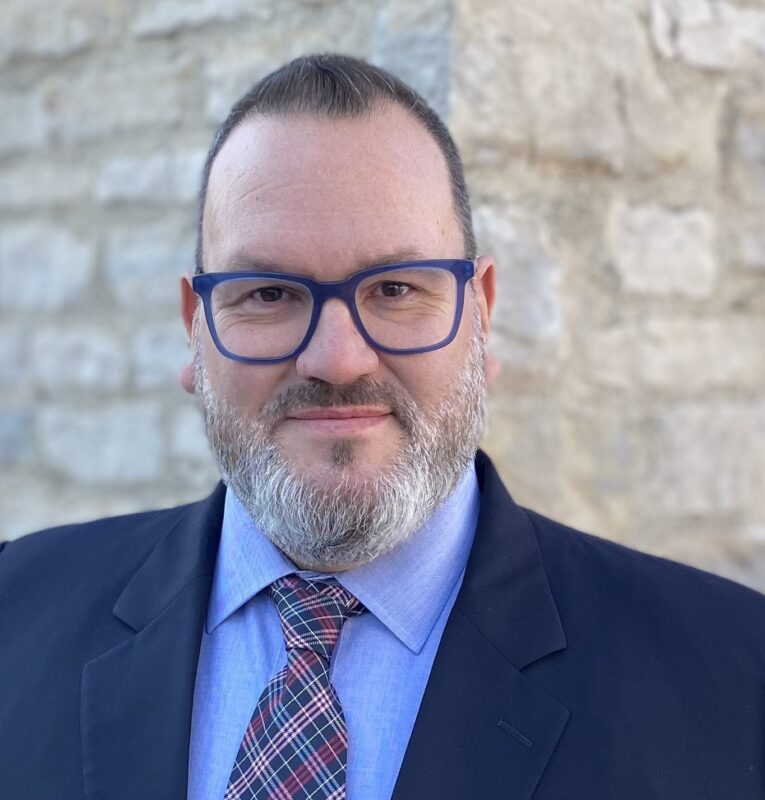Episode 8
The American LGBTQ+ Museum (with Ben Garcia)
Show Sponsor
Landslide Creative provides custom website design and development for museums who want to increase their engagement and connect with their visitors, donors, and volunteers. Stop fighting with your website and focus on growing your impact. Visit LandslideCreative.com to learn more.
Show Notes
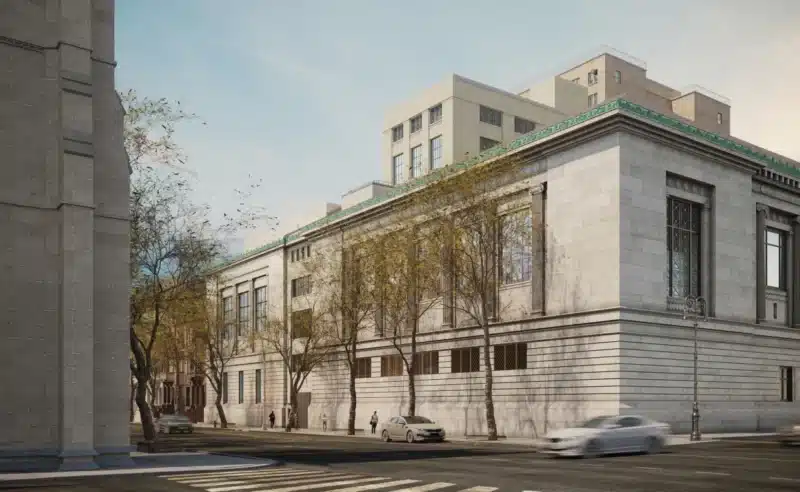
About the Episode
In 2026, the American LGBTQ+ Museum will open its doors in New York City. They’ll be housed in a dedicated 4,000 sq. ft. space inside New York’s oldest museum, the New York Historical Society. In this episode, I chat with the LGBTQ+ Museum’s Executive Director, Ben Garcia, about the Museum’s origins and its inclusive, intersectional, and activist approach. We also get into a discussion about inequities in our field and how Ben is trying to build a museum that’s truly equitable and inclusive—both inside and out—through a people-centered organizational culture.
About our Guest
Ben Garcia (he/him) has worked for 20 years to help museums become places of welcome and belonging for all people. He started as a gallery guide and educator, moved on to exhibition development, and then served in middle- and upper-management administrative roles, before joining the American LGBTQ+ Museum as Executive Director. He has presented and published regularly on creating structural equity in museums through transparency, accountability, fair labor practices, and by adding missing voices and perspectives.
Prior to joining the American LGBTQ+ Museum, Ben worked in various roles as an educator and administrator at the J. Paul Getty Museum, Skirball Cultural Center, and Hearst Museum of Anthropology. He then served as Deputy Director of the Museum of Us, and as Deputy Executive Director and Chief Learning Officer at the Ohio History Connection. He is versed in museum interpretation, operations, management, and fundraising. Ben led initiatives to return Indigenous ancestral human remains and belongings in San Diego and Ohio. He serves as a board member at Equality Ohio, working to get the Ohio Fairness Act passed, and as Vice President of the Association of Midwest Museums.
Ben graduated from the University of Massachusetts at Boston with a B.A. in Art and from Bank Street College of Education with an M.S. Ed. In Museum Leadership. He has shared his life since 1999 with his husband, Scott Fabianek, a UX/UI Designer and comic book artist. Ben is the child of a journalist and visual artist. He has six siblings, thirteen nieces and nephews, and a great-niece and nephew (as well as many beloved in-laws). He is a proud fantasy and science fiction nerd.
Links
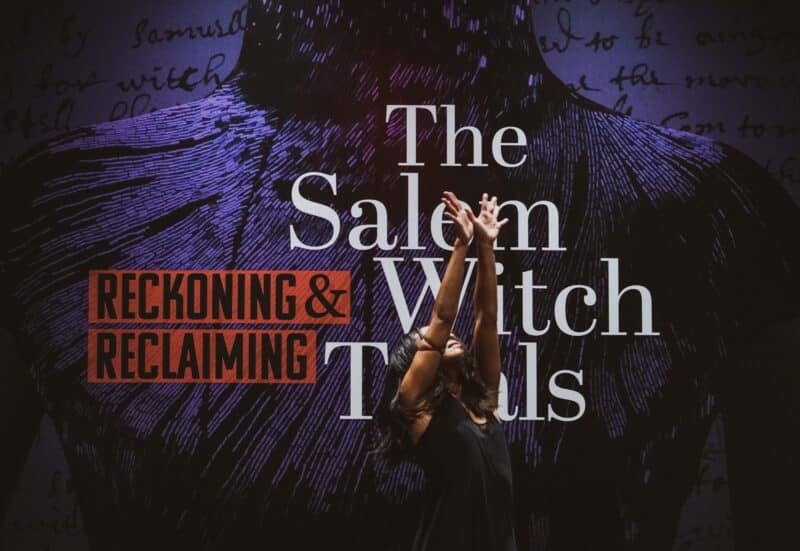
The American LGBTQ+ Museum Website
“American LGBTQ+ Museum coming to N.Y.C.’s oldest museum as part of expansion” (NBC News, Jul 2021)
“The American LGBTQ+ Museum Is Coming Into Focus” (Advocate, May 2023)
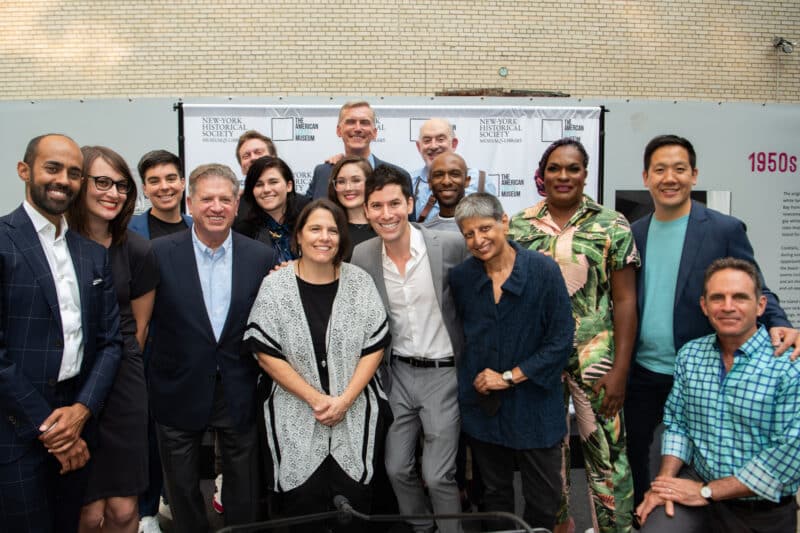
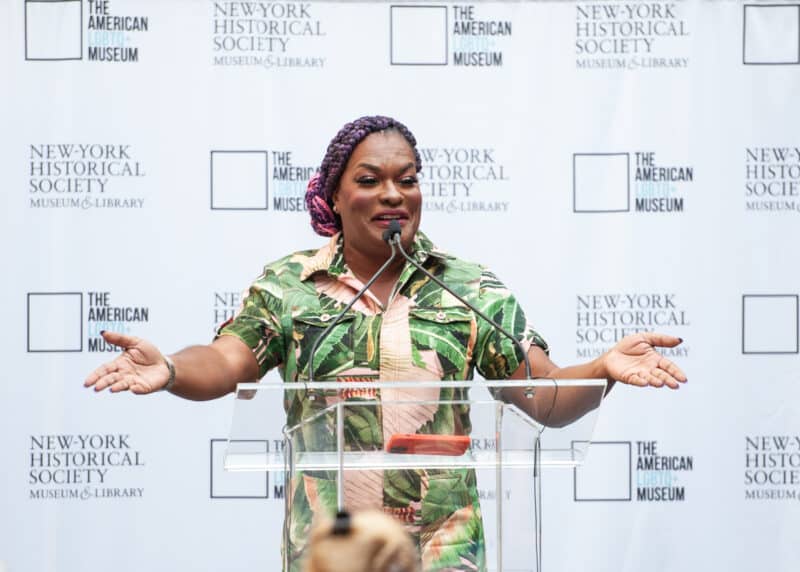
The American LGBTQ+ Museum: Breaking Ground Tues Sept 14, 2021
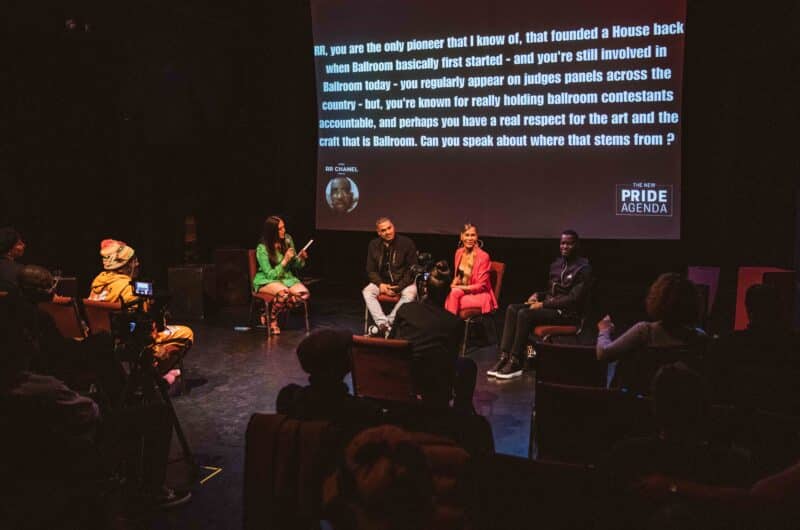
Recorded Performance of the Museum’s event, “Paris Is Still Burning: I’m an Icon, Darling!”
Transcript
Hannah Hethmon (Narration): Welcome back to We the Museum: a podcast for museum workers who want to form a more perfect institution.
I’m your host, Hannah Hethmon, Owner and Executive Producer at Better Lemon Creative Audio, where I make podcasts for museums, history organizations, and other cultural nonprofits.
We are kicking off season two of the podcast with an interview that I think is destined to become a fan favorite. In this episode, I’m talking the Executive Director of the American LGBTQ+ Museum, Ben Garcia.
In case you didn’t know, we do in fact have a national LGBTQ+ museum. It’s opening in New York City in 2026, housed within the New-York Historical Society, who’ve provided a 4,000 square-foot incubation space where this new museum can preserve, research, and share LGBTQ+ history and culture.
The American LGBTQ+ Museum’s board and staff have a bold vision for a museum that is not only actively part of a movement for change in society, but is also leading change within the museum sector. I think there is a lot we as a field can learn from what they’re doing.
But before we jump into that conversation, I want to shout out our show sponsor, Landslide Creative. This podcast would not be happening without their support. Landslide Creative provides custom website design and development for museums who want to increase their engagement and connect with their visitors, donors, and volunteers. With a custom website designed for the unique needs of your museum, you can stop fighting with your website and focus on growing your impact. Head over to landslidecreative.com to learn more.
Now let’s get into my conversation with Ben Garcia, Executive Director at the American LGBTQ+ Museum in New York City:
Hannah Hethmon: So you’re not quite open to the public as a physical space, but you’re getting really close. Where are you in the process of planning and preparing to welcome visitors and attendees?
Ben Garcia: Absolutely. We are going to open the museum in 2026 in New York City. We have a partnership with the New-York Historical Society, which is New York State’s oldest museum. And so in 26, New York State’s first museum will become home to its newest American history museum, one focused on the lives of LGBTQ+ individuals in this country. from its beginnings as indigenous lands to the present, we are already doing public programs and events around the five boroughs of New York and also with partners around the country as a way to build awareness, to begin to build partnerships. Our commitment is to do all of our work in partnership with outside organizations. And so that’s a big network that we’re trying to build around the country.
Additionally, the work of putting together our organizational structures, the policies and procedures that we will build the organization on, ones that center racial, gender, and disability justice. And so we have this opportunity as a new organization to build ourselves on a new set of assumptions and structures, which is one of the really exciting things about what we’re doing. And then of course we are doing lots of fundraising because we have sort of a heavy lift. The building is gonna be completed at the end of 2025. So we have our space already through this partnership but we have to raise funds for all of the exhibitions that we’ll be doing at New York Historical and also traveling. And of course for our operations and our digital platform and all the other pieces. So we’re moving forward on all fronts, and we’re just really excited. It’s really wonderful.
Hannah Hethmon: Yeah, sounds like a busy, exciting time. So personally, I love a museum origin story, and not often do you get to come in and hear so close to the origin when everyone remembers. So can we go back to the very beginning? How did this project begin? What was the spark and how did it go from an idea to a funded organization that is building out a space?
Ben Garcia: There have been conversations about starting a museum like this that have taken place over the past couple of decades. We have a couple of partner organizations around the country that have already organized and are open as museums, the GLBT Historical Society in San Francisco, which started out as a really large archive and collection has a museum space in the Castro, and then the Stonewall National Museum and Archives in Fort Lauderdale also started as a big library and archive and has museum exhibitions that they’re doing. So here in New York in 2017, a group of longtime advocates and activists gathered. Among them were the late Urvashi Vaid, who has held many leadership roles in the movement over the years, including as Director of the National Gay and Lesbian Task Force, as it was called back in the 90s. And Richard Burns, who for 22 years was the director of the LGBTQ center here in New York. And so they and some other folks started thinking about the need for an organization that would tell the history of the LGBTQ+ liberation movement, be a museum that was also part of the movement. Urvashi really envisioned this as a museum that’s also a school for activists. Richard often talks about the formation of this museum as a political act. And so the roots of this really are in the movement and in activism. And so we are… able to have a very clear position, you know, sort of standing with the museums are not neutral movement. We know we don’t claim neutrality in our perspective. We have a very clear perspective. And our, you know, our goal, our vision really is a world in which all people work toward and experience the joy of liberation. And so we really see this as an intersectional institution and an activist institution.
Hannah Hethmon: Okay, so this group comes together, they’re like, we need this museum, which of course we do. How do they get from that activist group to something in motion?
Ben Garcia: Yeah, one of the early things they did was to build the support to do an early stage of planning. And they engaged Amy Kaufman Cultural Planning, And they did a really incredible piece of work in 2018 and 2019 to plan the vision for the museum. And it included a lot of research. So there were focus groups in and around New York that were held in multiple languages with LGBTQ people who would potentially be contributors in some way or visitors in some way. There were conversations and surveys sent out to the heads of LGBTQ organizations around the country, to the heads of archives and museums around the country. And then there was a survey sent to 40,000 LGBTQ households. And we received more than 3,000 responses about what people thought was important for the museum to address and a whole host of questions. And so there’s a really impressive body of research that was the foundation for the decisions that had been made since then. At that point, the vision was for a freestanding 70,000-square-foot building with 40,000 square feet of exhibition space. You know, what the kind of thing you would imagine if you’re thinking about a national history museum. So that was the vision.
Hannah Hethmon: Ambitious.
Ben Garcia: Yeah, ambitious. And then, you know, and then sort of COVID happened. And things were on hold for a little bit. But one thing that happened during COVID was the relationship with New-York Historical Society happened. They were looking to build an addition to their building. They’ve had an empty lot behind their building since 1939. They’ve had plans to build on it since then, and it’s finally happening. New York Historical has been on a real path for the past 15 years or so toward a greater set of histories that are being interpreted there, more inclusive histories. a focus on histories of color. So it made sense to them in terms of their path. And it made sense to us as a way for us to manifest this vision in a reasonable amount of time. And we still have a heavy lift around our campaign, but it’s not the same lift that it would have been if we had tried to do a huge building right off the bat.
Hannah Hethmon: Yeah. So, I don’t wanna ask, “Why does America need a national LGBTQ museum?” Because that’s a stupid question. Of course, we do, especially since most general museums, history museums, are just starting to kind of inch their way into a little bit of inclusion. But I’d like to hear you talk about what it means to create this museum now. What does it mean to have this now? And what is this museum going to be able to do that others can’t or won’t?
Ben Garcia: Museums matter in part because they are signals of what a culture values. And the fact that there are so few LGBTQ+ history museums in the country has signaled something to queer people. And so establishing this museum in New York and creating a museum that really has a national program states unequivocally that our histories are valuable, that our stories are valuable, our accomplishments, our resilience is important, and that rising generations, the youth and the children, you know, our youth are valuable and as they develop their burgeoning identities and begin to understand their lives in relationship to their gender or their sexual orientation, that is precious to us, that they have a place where they see a reflection of a lineage, in some cases that will be within their direct family, and in many cases that will be about a larger concept of family that we’ve always had as a community. So especially now, when queer families and the families of transgender and genderqueer people, and when the lives of transgender and genderqueer people are under such direct attack in legislatures across the country, the urgency for this museum is really clear to us.
In part, we’re in the situation we’re in today. Because the movement was so focused on advocacy and on gaining rights, it wasn’t in a position to really think about how do you instill knowledge about our lives and our histories in educational institutions in a way that generations growing up will see it as just a natural part of the human story and of this country’s story.
And so, you know, the work that museums do is about really institutionalizing or, um, I guess, establishing our histories in a way that they are taken for granted, you know, by people who grow up and learn about the history of this country. Um, and so the time is now. Um, it’s never. late to start doing this work. And hopefully, you know, we will not be the only museum of LGBTQ+ history that gets established in this next decade. We know that there are many that are burgeoning around the world and even around the country. And we welcome the rise of history organizations that focus on our histories, because as you indicated, other history organizations, while they might be doing it occasionally, they’re not doing it consistently yet.
Hannah Hethmon: Yeah. I’m kind of curious about, so thinking about the national museum and national needs, what is the kind of vision for reaching out to rural communities, to smaller cities, to the national community.
Ben Garcia: That’s something that we are giving a lot of thought to. And the fact that we chose to call ourselves the American LGBTQ+ Museum is an indication of our intention to try to have an impact across the country and to tell a really broad story or a very inclusive story geographically. We are going to have three parts of the organization as we develop. We’ll have sort of a physical home base here in New York, and people who are visiting New York from around the country or around the world will be able to access that, as well as the sort of three-quarter of a million queer people that live in New York itself.
Equally important is a set of traveling exhibitions that we want to develop with partners around the country. We envision those as exhibitions that tell a national story, a story of national significance. And then we’ll work with the museums that we partner with around the country to have a local facet to that story, whether that’s an exhibition about representation in the media or about sort of the rise of ballroom as an art form and culture, or whether that’s about, you know, the AIDS/ HIV crisis and pandemic, there is a local story to be told as well as sort of that larger national piece.
So that is really important to us. We’re not gonna have 40,000 square feet to start of exhibition space. We’ll have about 4,000 square feet dedicated to us in New York Historical. But we can still work with other spaces to make sure that there is 40,000 square feet of queer history being told around the country. And in fact, it’s so important for us to be showing up in the Johnson County Historical Society in Kansas or in the Ohio History Connection or in Miami or just in San Antonio, and around the country in places where queer people are living without the same protections and security that they are in New York or in California or in certain states around the country.
And so when we open in 26, the plan is to open the space in New York and in that same year to open a couple of these planned traveling exhibitions in partnership. And we hope to just continue to add to them one or two a year every year after that. Our goal is to make those finances work for host institutions so that we can provide that exhibition at very low cost so that they can invest in the local story. And what we get out of that is not just the impact that we want to have, but we get partners and we get access to local histories around the country that will then sort of be part of that repository that we all as new LGBTQ+ museums grow in cities around the country, there’ll be already a big body of existing exhibition content that can be sort of something they access.
That sort of addresses the third part of our strategy, which is the virtual museum or the digital platform that we’re gonna create. So we’ll have a home base in New York, we’ll have these traveling physical exhibitions, and then we’ll have a virtual museum and digital space where we both archive the content from those physical experiences, but we create born-digital experiences for people, who have access to the internet, which is not everybody in rural communities or even urban communities. But at least, you know, they’ll be able to go to their public library, hopefully, and access our museum online at the very least.
Hannah Hethmon (Narration): We’ll be right back to my conversation with Ben Garcia, but first, it’s time for a digital minute with Amanda Dyer, Creative Director at Landslide Creative:
Amanda Dyer: Amanda Dyer: Hi, I’m Amanda Dyer, creative Director at Landslide Creative, and I’ve got a quick tip you can use to improve your museum website. Making your website accessible is one of the most important things you can do with your site to better serve all communities. Just like your museum building should be accessible for all visitors, your website should be as well, maximizing your website’s.
Accessibility includes practices like ensuring your text is large enough with plenty of contrast, including transcripts and captions for video. Clearly structuring your text, differentiating your links, and writing simple, concise content. Accessible web design is an ethical imperative and a legal requirement in many countries.
Plus, it expands your audience, improves the user experience, and can even boost your search engine performance. You can learn more about accessible design from museums on our website landslidecreative.com/accessible.
Hannah Hethmon (Narration): And back to the episode.
Hannah Hethmon: So let’s zoom back to the space then, home base in New York City. The plan for that is, quote, it will be “colorful, lively, immersive, and exploratory running counter to common conceptions of museums.” So I love that on the website, it’s like, it’s going to be colorful, i’s going to be lively. This was like really important among the, you know, the little information available so far. So can you talk to me about this vision for, for what it will look like and what it will feel like when you’re in this space and then hopefully the traveling spaces as well.
Ben Garcia: Yeah, as you know Hannah, that’s always a complicated question early in the planning process because there’s so much we don’t know yet. But what we do feel, know, and believe about the space is we want it to feel like a queer space. We want it to be a space that you walk into and the incredible creativity that has been generated from queer imaginations, minds, and intellects is something we want people to immediately feel as you walk in. And so we have to think about how that will be delivered and what that mix of media and artifacts will be. But we know that we want it to be multisensory and we want there to be, we want people to hear music and we want people to sort of feel the reverberations of that music in their bodies and in the space.
We are a museum of history and culture, and that gives us such a broad set of stories and… opportunities because we can look at performing arts, we can look at design, we can look at architecture, we can look at music, and all of the forms that queer people have had such a strong part of creating. So we know we want that to be the feel.
I think that it’s such a broad story. There are so many aspects of our communities that we want to make sure recognize themselves when they come into the space. We’re working against the white supremacy and sort of patriarchy of the LGBTQ+ movement and community. We really understand our responsibility to create a space where queer people of color, where genderqueer people, where queer women, and where queer people who are living with disabilities come in and understand that this space was designed to welcome and meet them and their stories and where they, where everyone who walks in sees a reflection in some way shape or form of experiences that really resonate to them based on intersections of identity. So you know, we, it’s, it’s a really big responsibility
Hannah Hethmon: It sounds so exciting; I can’t wait to visit. I love the intention behind it and the careful listening and planning. I think most museums would benefit from doing that more. So in a project like this, where you’re trying to include a lot of different voices and perspectives, people are really important. So I was wondering if you could introduce me to some of the people on the team and the wider members of the community who are involved in bringing things to life. Who’s working on this? Maybe share something about them, people who you want people to know about.
Absolutely. I mean, the team right now, we’re a small team right now. There are four of us on the staff, but our team really does include this incredible board of 29 individuals who come from many different backgrounds, many of whom have worked in activist and advocacy organizations, a bunch of whom work in LGBTQ philanthropy. a number of whom have worked around major political campaigns. And then we have a set of people working in the creative fields and media. It’s an incredible board. If listeners go to the website, you can sort of see who the board is and see their bios. And it’s a board that was so thoughtful about forming itself to be representative, to be majority BIPOC, to be a board that really sort of represents so that people around the table are important to include any time we’re telling an American history story.
And then we’ve got the team. So let me start with the team of staff, like my colleagues. Suhaly Bautista-Carolins is the director of public programs and partnerships. Came to us most recently from The Met, where they were in charge of public programs. And really sort of came up through community-based arts organizations and queer arts organizations.
We hired our colleague Hew. Hew [Evans] came to us after having worked at a local history organization in Greenwich, having worked at the Leslie Lohman Museum for a while. You know, Hew is working very closely with me on administrative issues and as the board liaison and also, you know, just, I mean, at this point, everyone has about six jobs. And so Hew was helping a lot with like our members. We’re building a membership program and our development stuff.
And then the longest-standing member of the team who precedes even me is my colleague Luci. And Luci [S. C. Lucier] comes from a performing arts, dance, and theater production background. One cool thing about Luci is they co-wrote with their writing partner and produced and directed. a rock musical based on Xena, so on Xena Warrior Princess. So like, yeah, so they’re like super into the fandom and they’re just incredibly talented. So we’ve got this, you know, just amazing talented team of people who are really passionate about this. And, you know, we’ll be growing the team over the next few years.
Hannah Hethmon: Yeah. I mean, it sounds like an amazing group, people who bring so much different skills and life experiences. And I also just love the kind of the theme, the idea that you are creating full-time jobs for people who may feel marginalized, who may have to push back against toxic work cultures, that kind of thing in the museum field, which is not always the most welcoming. So creating that space where these people can come in and flourish and become museum leaders, that’s important too.
So I think to wrap up, you’ve talked about how activism and being non-neutral is built into this museum. I think it’d be kind of hard to be a quote-unquote “neutral” or “objective” LGBTQ museum. So you have this kind of built in nature of activism and of going out there and making a difference and being part of change and progress. Can I just, I was wondering if you could maybe like talk to the field a bit. What can the rest of museum world, the people listening, learn from this approach that they can take back to their own museums, to whatever’s going on in their communities, and try and create museums that are making a more perfect union that are out there doing good.
Ben Garcia: I really appreciate that question. The reason I became an executive director was because I recognized growing up in the field and working. I’ve worked at every level of a museum in over the past 22 years. I started as a part-time gallery educator and worked up through educational roles and then into exhibitions and then administration. The reason I wanted to sit in the executive director seat was because that’s really the seat where you can work with the board and the staff to challenge some of the fundamental assumptions of our field and challenge some of the fundamental structures that our field and our organizations are built on.
You know, what I see in our field and what I experienced was working in organizations as sort of the externally facing person, working with community members who were often so happy to be engaged and so happy to be working on projects, while at the same time, having a very different understanding of why those partnerships were valued internally, which was often… for reasons that felt more about a surface level performance of inclusion or community, but where the sort of internal structures and the internal culture was not inclusive, was not welcoming, was not able to be impacted by people who weren’t at the top of those structures. So for me, being an executive director was about figuring out how do you make a museum successful that is built on a different set of assumptions, one where you’re flattening hierarchies where you can, where you are challenging the assumptions about nonprofits in our field, that we should just be so grateful to be doing work that is mission-centered, that sort of martyr model, where we will use our energy and life force through most of our life on behalf of this cause that we care about and not have any security for the later part of our life.
Hannah Hethmon: It’s like what you’re saying is about having this alignment, this, you know, an outward inclusion and kindness and progress that starts at the very core, at the very heart of these, and that starts with the makeup of the board, that starts with the staff, that starts with the who’s running it, instead of it being an external, you know, coating that’s put on. And yeah.
Ben Garcia: Yeah, I’ve worked in so many organizations where my role, as well as the role of my colleagues, has been to try to move an organization toward greater inclusion, toward greater internal and external alignment. And so to be able to do it from the beginning, to start from the beginning, is an incredible opportunity to seed those values at the beginning. And I found a board for whom those values were real. And so when I went to the board and I said, I would rather grow a team slowly and pay a true living wage for the community in which they’re living rather than have more people and pay market rates for museum compensation. They believed in that and they supported that. And you know, I think a lot of people think what you do is you do a survey of all the other museums in your community, and you look at the national surveys of compensation, and then you try to hit the 70th or the 90th or even the 100th percentile of that. But the fact is, if you’re using a survey to determine compensation, all you get with a survey is a snapshot of the current inequity around nonprofit workers, around cultural workers. And so even if you’re paying a fair and generous amount by that standard, you’re just paying a fair and generous amount by a fundamentally unfair standard. So we just did something different. We just sort of thought about what it takes to pay your rent, pay your student loan, pay for your food and the things that you need, hopefully put away five to 10% of your money into some sort of savings or long-term security-generating thing. And we know that takes. And so, for New York City, what we came up with was that minimum wage in our organization is gonna be $75,000 a year, because in New York, that means maybe you’ll only have to live with one or two roommates instead of like six, right? For us, a living wage means a wage where you don’t have to get a second job, where this one job sustains you and your family.
Hannah Hethmon: And you don’t burn out and leave the field and take your talents elsewhere.
Ben Garcia: Yeah.
Hannah Hethmon: I love this. If you wanna do good for people, you have to be a good museum and do good for the people who are making that museum work possible because it’s all about the people. Buildings don’t do anything.
Ben Garcia: That’s exactly right, Hannah. I mean, I think your podcast is really trying to encourage organizations to center people, not just in their programs, but within their organizational cultures. And we know what the problems are. We know how much money museums spend on taking care of things rather than taking care of people. And we know that this model comes from a time when the people who worked in mediums were often people who came from generational wealth and where the compensation wasn’t about sustaining their lives. Usually, it was about contributing to something that was already pretty sustainable. And so changing that, being transparent about that. You know, another thing that we’re committed to in our museum is that my compensation won’t ever be more than four times the compensation of the person who is, you know, paid the least in the organization, where that spread doesn’t get out of whack because you have so many museums where the executive director is making 10 times or more, 15 times, you know, 20 times the compensation of the people who are being paid at the entry-level. And it just, it doesn’t feel right, especially for a nonprofit organization that is receiving a lot of public resources to have that kind of disparity, to sort of reinforce that disparity that exists in our culture. So that’s the beauty of starting something new, of having this incredible activist board. For me, it was a no-brainer because I saw who the board was and I talked to them about their values and about the things that I recognize that you’re recognizing, Hannah, that are wrong in our field. And they wanted not just to create a queer museum, they wanted to queer the museum form in ways that would hopefully be a model for others, yeah.
Hannah Hethmon: I love that. Queer the museum form. Fantastic. I really appreciate you sharing everything that the museum is doing for the LGBTQ+ community, for New York City, for the country, and for the field. This is a win, win, win, win, win. Really exciting. And I look forward to hearing more and hopefully taking the train up to visit from DC in a few years. So thank you so much for your time.
Ben Garcia: Absolutely. Thank you, Hannah. Really appreciate it.
Hannah (Narration): Thanks for listening to We the Museum. You’ve been listening to my conversation with Ben Garcia, Executive Director at the American LGBTQ+ Museum.
For show notes and a transcript of this episode, visit the show website: WeTheMuseum.com.
You can find out more about the American LGBTQ+ Museum and follow their journey to opening day by visiting their website, Americanlgbtqmuseum.org.
Once again, a big thank you to our show sponsor, Landslide Creative. Making a podcast takes a lot of time and energy, and I wouldn’t be able to set aside the space to make this show without Landslide Creative’s financial support. If your museum is considering a new website, definitely make Landslide Creative your first stop.
Finally, I’ve been your host, Hannah Hethmon. As Owner and Executive Producer at Better Lemon Creative Audio, I help museums around the world plan, produce, and edit podcasts that advance their missions. Find out more about my work at BetterLemonaudio.com

